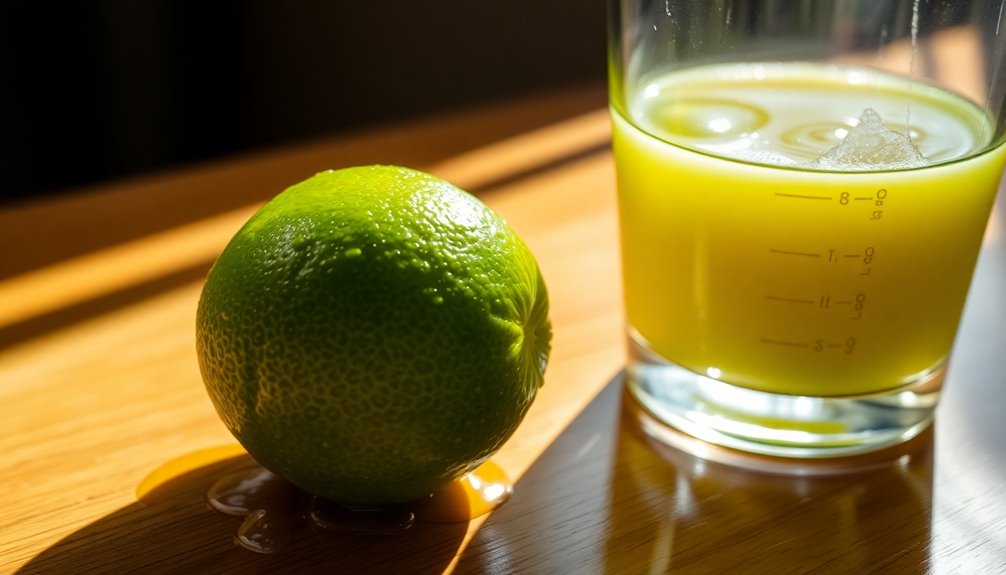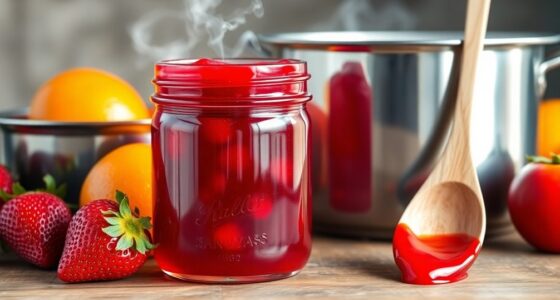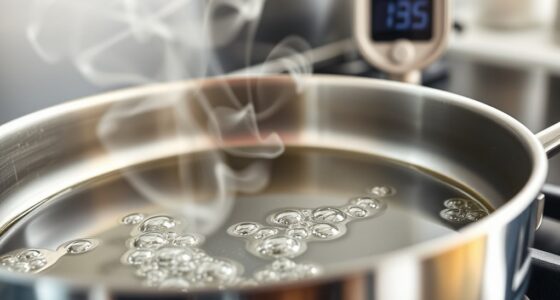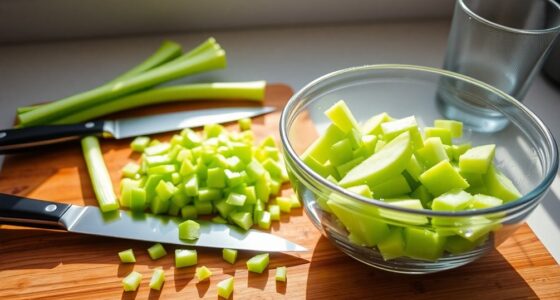A medium lime usually gives you about 2 tablespoons or 1 ounce of juice, perfect for recipes needing fresh lime juice. However, the yield can vary with size and ripeness, especially for different lime types like Persian or Key limes. If you have a specific recipe in mind, you might need multiple limes. It's always good to know more about lime yields to get that perfect flavor balance in your dishes.
Key Takeaways
- A medium lime typically yields about 2 tablespoons (1 ounce) of juice.
- Persian limes can yield between 1 to 3 tablespoons of juice, depending on size.
- Key limes are smaller; approximately 3 are needed to equal the juice of one medium lime.
- For larger recipes, one pound of limes yields about 1/2 to 2/3 cup of juice.
- Ripe limes provide better juice yields, so choose them carefully for recipes.
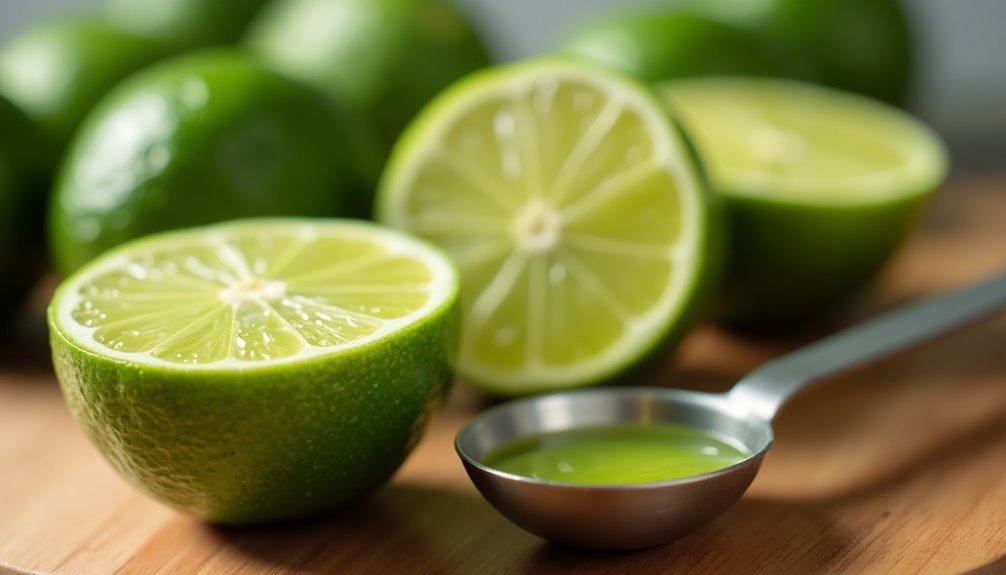
Have you ever wondered how much juice you can get from a lime? It's a question that often pops up when you're whipping up a delicious dish or a refreshing drink. Understanding lime juice yields can make a big difference in your cooking and cocktail-making, and knowing how to measure it out can save you time and frustration in the kitchen.
When it comes to the average yield, a medium lime typically gives you about 2 tablespoons of juice, which is roughly 1 ounce. This is a handy measurement to keep in mind, especially when a recipe calls for fresh lime juice. It's reliable, so when you're in doubt, you can confidently use 2 tablespoons to substitute the juice of one medium lime.
However, the actual yield can vary depending on the type of lime you're using. For instance, if you're working with a Persian lime—one of the most common varieties—you can generally expect to extract between 1 to 3 tablespoons of juice per lime, depending on its size and ripeness. This range means you might need to squeeze a few more limes if you're aiming for a specific amount of juice.
If your recipe calls for a larger quantity, like a marinade or a dressing, you'll want to keep this variability in mind to ensure you get the right flavor balance. On the other hand, if Key limes are your choice, you'll need a bit more to achieve the same amount of juice as a medium Persian lime. Typically, you'd require about 3 Key limes to match the juice yield from just one medium lime.
Key limes are smaller and have a more intense flavor, which can be fantastic for certain recipes, but they do require more effort to juice. If you're juicing a pound of limes, the average yield is around 1/2 to 2/3 cup of juice. This translates to approximately 6 to 8 medium limes, depending on their size.
Frequently Asked Questions
How Much Lime Juice Is in 2 Limes?
When you're looking to find out how much juice you get from two limes, you can expect around 4 tablespoons or about 2 ounces.
Keep in mind that the exact amount may vary slightly depending on the size and ripeness of the limes.
If you need a specific measurement for a recipe, it's helpful to remember that two limes typically provide a decent amount for most culinary uses.
How Many Tsp Is 2 Limes?
When you juice two medium Persian limes, you'll get about 12 teaspoons of lime juice.
If you're using medium limes, expect each to yield around 6 teaspoons, totaling 12 teaspoons for both.
Keep in mind that Key limes produce less juice, typically around 9 teaspoons for two.
Knowing this helps you measure accurately for your recipes, ensuring you get the right amount of zing in your dishes!
How Much Lime Juice Concentrate for 1 Lime?
When you're looking to substitute lime juice concentrate for fresh lime juice, you'll need about 2 tablespoons of concentrate for each lime.
This gives you the same flavor impact since the concentrate is more concentrated in acidity and taste.
Keep in mind that using the concentrate can streamline your cooking process while still delivering that zesty lime flavor you love.
Just remember, it's all about that right balance!
Can I Substitute Bottled Lime Juice for Fresh Lime Juice?
Imagine a painter choosing between vibrant pigments and muted pastels.
When you substitute bottled lime juice for fresh, you risk losing that vibrant flavor. Bottled juice can have preservatives that dull its brightness, so while you can use it, you might want to adjust the amount based on your taste.
For dishes like guacamole, fresh lime juice is the key to keeping things lively and delicious.
Trust your palate; it knows best!
Conclusion
When you're squeezing limes, you can expect to get about 2 tablespoons of juice from each lime. That's around 30 milliliters! Knowing this can really help you when you're mixing drinks or cooking. Fun fact: Did you know that limes are actually a great source of vitamin C? Just one lime provides about 20% of your daily recommended intake. So, not only do you add flavor, but you also boost your health with every squeeze!
Cindy thoroughly researches juicing trends, techniques, and recipes to provide readers with practical advice and inspiration. Her writing style is accessible, engaging, and designed to make complex concepts easy to understand. Cindy’s dedication to promoting the advantages of juicing shines through her work, empowering readers to make positive changes in their lives through the simple act of juicing.

